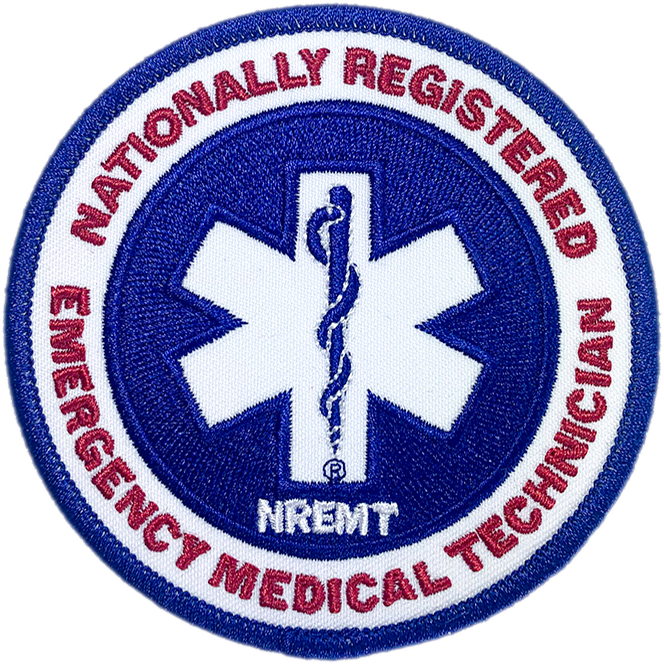Raven EMS Education Program ManualRAV-646 EMT Laboratory and Clinical Course
Course Description
This course provides hospital and ambulance clinical experience for the EMT student. Emphasis is placed on performing patient assessments, treatments, and interactions appropriate at the EMT level of care (NC Community Colleges, 2024). Upon completion, students should be able to demonstrate competency at the EMT skill level.
This course provides an opportunity for students to apply classroom knowledge to real-life situations and patients. Included in this course are all the components of the EMT curriculum as applied to live patient care.
Course Duration: 48 contact hours.
- Note: NCOEMS minimum requirement of 48 hours clinical time (NCOEMS, 2021).
Prerequisites
To be eligible to attend clinical rotations, the student must have successfully completed all classroom EMT sessions and final exams for cognitive, psychomotor, and affective domains. Additionally, the Medical Director and Lead Instructor must recommend the student to progress to the clinical course (NCOEMS, 2023). See Clinical Approval Form.
General Requirements
- Staff substitutions: At no time may an EMT student be substituted for EMT staff.
- Refer to Section 5.87 - Clinical Sites Details for information on site locations, contact information, and scheduling clinicals
- Students are required to participate and be eligible to participate at all clinical sites without exception. Students must also comply with the facilities’ policies and procedures. Raven Medical, Inc. is not obliged to locate an additional clinical site to accommodate a student for any reason. However, new clinical sites may be requested and efforts will be made to accommodate students requests.
- Courses with a clinical component require mastery of the clinical objectives in order to successfully complete the course. The clinical component of any course is an integral portion of that course. Clinical experiences are graded on a pass/fail basis. If a student fails in clinical, he or she will fail the course. Students will be sent home from the clinical setting for unsafe or unprofessional behavior and may be grounds from dismissal from the course.
- The student will observe all clinical rules and regulations of the host institution and will not linger after the completion of their rotation (FTCC, 2023).
- If a student breaks any portion of the patient confidentiality policy, they will automatically be dismissed from the EMT course.
- Texting, taking pictures, or taking videos while on clinical rotations is prohibited.
Course Scope
If, at any time during a clinical rotation, a student is asked to perform outside his/her scope of training, that student shall immediately tell the requestor that they are not trained for that procedure and are not allowed to do it. Students will demonstrate a willingness to assist staff members when asked to help in a capacity for which they are qualified. The EMT student is to perform BLS skill only, no ALS skills (FTCC, 2023).
Student Identification
Students will introduce themselves to patients prior to any treatment or assessment (FTCC, 2023). All students will be required to wear an issued ID badge during all clinical rotations. The name badge shall be returned upon course completion (or having dropped the course). Students will assume replacement cost if their name badge is lost, mutilated, or destroyed.
Laboratory Requirements
Required basic laboratory competencies are listed below. These requirements must be completed prior to any live patient encounters. At least one (1) evaluation must be completed on you by an instructor or preceptor while you complete the following skills:
Clinical Requirements
Minimum hour requirements are listed below. If the minimum number of patient contacts listed is not completed by the end of the minimum hours required, additional hours must be scheduled to meet the contact requirements.
- Minimum of 48 hours total of combined clinical time between Emergency Room (ER) and ambulance.
- No minimum requirement of ER hours, but it is suggested to obtain at least 12 hours in an ER.
- A minimum of 36 hours is required on an ambulance.
- Prerequisites to participate in clinical rotations include:
- Successful completion of BLS CPR
- Completion of the patient assessment lecture and test
- Signatures obtained on Clinical Approval Form
Documentation
Specific clinical patient assessment requirements to be completed by the end of all clinical hours are listed below. These requirements can be worked on throughout all clinical sites.
- Documentation of a total of ten (10) patient assessments:
- At least four (4) must be on medical patients AND
- At least four (4) must be on trauma patients.
The following forms are to be used to satisfy clinical documentation requirements and get credit for participating in clinicals:
Clinical Double-Dipping Policy
- In the event, you have a patient that has both medical and trauma complaints, this one patient can be counted as two separate patients if you perform a complete medical assessment and a complete trauma assessment.
- However, if you encounter the same patient more than once in the same shift, the only way you can count multiple assessments is if the patient returns for a second visit to the ER or calls 911 a second time while riding on the ambulance.
Change Log (7.50.916.C646)
| Date | Author | Description of Change | Citations |
|---|
| 2025-01-12 | Becker, T.Theron Jack Becker | Moved this course to its own page from x.xx.916. | |



